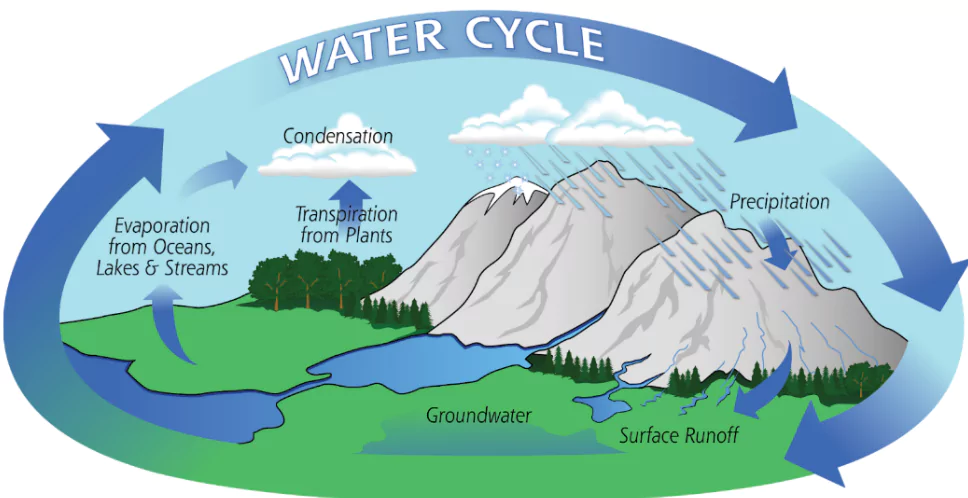The report, ‘2024 Global Water Monitor Report’, was produced by an international team of researchers from universities in Australia, Saudi Arabia, China, Germany, and elsewhere.
Key Findings of the ‘2024 Global Water Monitor Report’
- 2024 Hottest Year on Record: The average global temperature reached 1.5°C above pre-industrial levels.
- Water-Related Disasters: Over 8,700 fatalities and 40 million displaced due to water-related disasters.
- Economic losses exceeded $550 billion globally.
- Increase in Dry Periods: 2024 witnessed 38% more record-dry months compared to the baseline period (1995–2005).
- Extremely dry months have been increasing in recent decades.
- Record-Breaking Rainfall: Monthly rainfall records were set 27% more often in 2024 than in 2000.
- Daily rainfall records were set 52% more frequently.
- Terrestrial Water Storage (TWS): Ongoing low TWS values were observed in most of the world’s dry regions.
-
- Increases in TWS were noted in parts of Africa (western, central, and eastern regions).
- Lake and reservoir water storage worldwide declined for the fifth year in a row.
- Projections for 2025: Droughts could worsen in northern South America, southern Africa, and parts of Asia.
- Increased flood risks are anticipated in wetter regions such as the Sahel and Europe.
Check Out UPSC Modules From PW Store
What is Water Cycle?

- The water cycle involves the constant movement of water in all its phases (solid, liquid, gas) on the ground, underground, and in the atmosphere.
- It is driven by solar energy and temperature changes, regulating weather patterns and enabling the availability of water for all living organisms.
- Key processes:
- Evaporation: Water escapes from the ground or water bodies into the atmosphere.
- Transpiration: Water taken up by plants is released as vapour.
- Condensation: As warm air rises from the Earth’s surface, it cools and water vapor turns back into liquid droplets and eventually forms clouds.
- Precipitation: Condensed water vapour forms clouds and falls as rain or snow.
- Storage: Water is stored in ice caps, lakes, rivers, soil, or underground aquifers.
- Runoff: When there’s more water than the land can absorb, the excess water flows over the land’s surface into streams, rivers, or ponds.
Impact of Climate Change on the Water Cycle
- Increased Evaporation and Precipitation:
- Higher temperatures cause more water to evaporate into the atmosphere.
- Warmer air holds more moisture, intensifying precipitation events.
- Intensified Storms and Floods:
- With each 1°C rise in temperature, the atmosphere holds 7% more moisture, increasing storm intensity, duration, and frequency.
- Severe floods are becoming more frequent globally.
- Increased Droughts and Soil Drying:
- High temperatures lead to faster evaporation, drying out soils.
- When rain occurs, water often runs off hard, dry ground, further exacerbating soil dryness and increasing the risk of droughts.
- Erratic Water Cycle:
-
- Climate change is making the water cycle more irregular, with regions experiencing either extreme rainfall or prolonged droughts.
- Sea-level rise: Thermal expansion and melting ice is contributing to sea level rise.
- Resulting in oceanic acidification and affecting marine life
- Future Projections:
- The planet is on track for a 2.6–3.1°C temperature increase by the century’s end if greenhouse gas emissions are not drastically reduced.
- This could lead to more unpredictable and extreme weather events.
![]() 8 Jan 2025
8 Jan 2025


